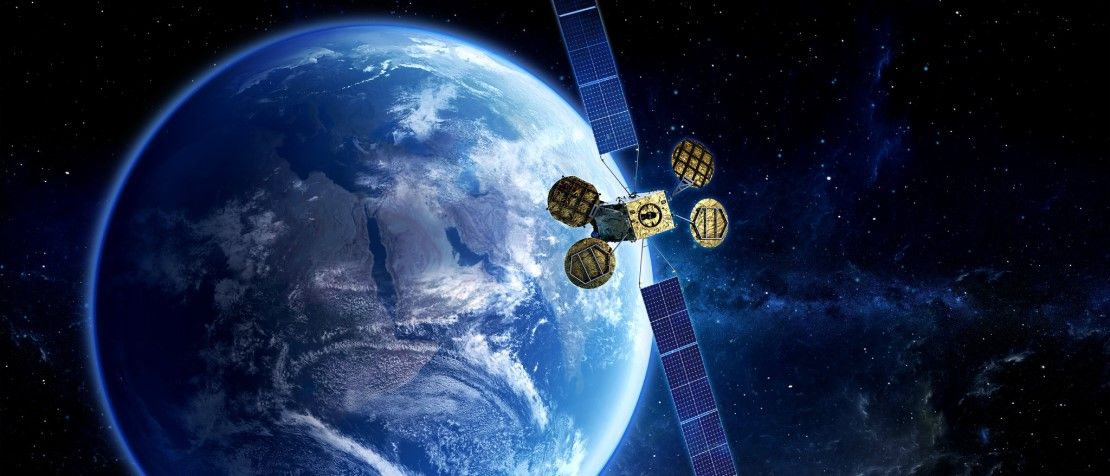
Preserving a sustainable space environment: Eutelsat
David Bertolotti, Eutelsat’s Director of Institutional and International Affairs, told ITU News what it means to be a responsible satellite operator and how the company is helping to put Europe at the forefront of the space sector.
1. According to the Index of Objects Launched into Outer Space, 2020 saw the largest number of satellites ever launched in a single year: 1,283. What kind of challenges and opportunities can we expect to see with the growing numbers of satellites being put into service over the next few years?
These growing numbers reflect the strong dynamics of the space sector, and more specifically of space telecommunications: the high demand for services is stimulating private sector initiatives.
Telecommunications are clearly a driver of the space economy for the current decade.
But these numbers also indicate significant challenges. There is a risk that the current trend will become unsustainable and harm operations both in and from space – not just in the low-Earth orbit (LEO), but in all orbits. Debris and interference are two critical issues that need to be tackled seriously.
2. What does a healthy low-Earth orbit economy look like?
A healthy LEO economy has an unencumbered orbit, where debris creation is strictly minimized to reduce risks of collisions, and where frequency assignments are carefully coordinated, in accordance with ITU (International Telecommunication Union) filings and regulatory procedures. It is also an economy where enough players can develop their activities, thus offering end users a diversity of applications and solutions.
3. Tell us more about the European satellite landscape when it comes to production and operations.
Europe has all the assets to remain a driving force. In the public sector, the new European Union Space Programme Agency, EUSPA, was created in April 2021 to support the implementation of EU priorities in this area and complement the European Space Agency, ESA. On the private sector side, there is a launch system operator (Arianespace), two major satellite manufacturers (Thales Alenia Space and Airbus Defence and Space), and a space telecommunications operator (Eutelsat), all of which are world-class in their fields.
The existence of a European space telecommunications operator constitutes a key asset in this value chain.
With nearly 90 per cent of our orders placed with European manufacturers, and having become Arianespace’s largest commercial customer over the years, Eutelsat accounts for a large part of the demand in the European space industry. As the cornerstone of the industry, we are pulling out all the stops – notably with our recent 24 per cent stake acquisition in the OneWeb satellite constellation, which is intended to become a world leader in the provision of telecom services to governments, telecom operators, enterprises, and maritime and air mobility markets. This allows us to take a leading position in the field of LEO constellations and strengthens the European space industry in the geographical sense, since OneWeb’s industrial ecosystem is located in France, Italy and the United Kingdom.
4. How has the COVID-19 pandemic affected your operations over the past year?
The satellite telecommunications business has proved quite resilient in the face of the public health crisis. The aviation connectivity segment has suffered a bit, with the interruption of the big transcontinental links – but it will pick up again gradually, as air travel recovers.
On the broadcasting side, free-to-air channels are facing a significant reduction in their advertisement resources due to the COVID crisis.
We hope that we will gradually go back to the positive trends we saw before COVID.
5. What role does international cooperation play in the advancement of satellite and space development?
International cooperation has always been instrumental in the development of space applications. Eutelsat has a very strong European identity and so for the Group, Europe is a first natural circle of cooperation.
We are engaged in projects sponsored by the European Union, the European Space Agency and national space agencies of various European countries on a very regular basis. But we are also a global operator and, as such, we interact with a large number of players worldwide, for technology developments or launch services for instance.
6. In this crucial Decade of Action to deliver the United Nations Sustainable Development Goals (SDGs), should sustainable space use become the 18th SDG? If yes, why, and what needs to happen?
Eutelsat committed to the principles of the Global Compact in 2019. Our corporate social responsibility challenges are in line with the SDGs defined by the UN. We focus our efforts on eight SDGs.
Bridging the digital divide is a key pillar of our corporate social responsibility strategy.
Offering satellite Internet connectivity over sub-Saharan Africa with Eutelsat’s new Konnect satellite also supports governments that want to implement development goals, reduce inequalities, and offer new economic opportunities. A private company is not necessarily in the position to judge whether the list of SGDs could be expanded. But anything that helps raise awareness about the centrality of space in human development, and about the need to preserve principles such as access for all and sustainable usage, goes in the right direction.
7. How can an organization like ITU work with the aerospace industry to ensure space governance outcomes are for the good of all?
ITU is quite a unique organisation in the UN system, because from its very origins, it has been practicing something that is today deemed essential: a multi-stakeholder approach.Private actors have always had the right to express their views at ITU, and ITU rules are meant to protect their operations. That must be preserved.
But with an increase in space activity that was not foreseen, challenges are mounting. The governance model for radiofrequencies in the space segment must remain “fit for purpose” and able to properly characterize situations in case of disputes, especially in low-Earth orbit. Solutions must be available through the organization and legitimate rights upheld.
Image credit: Eutelsat via Flickr
